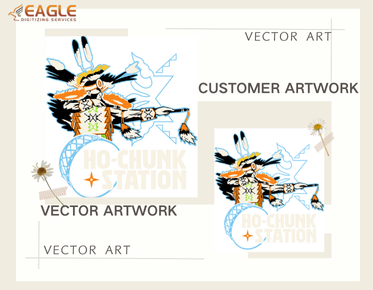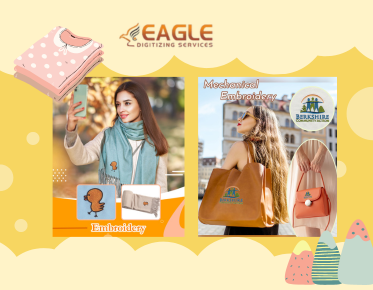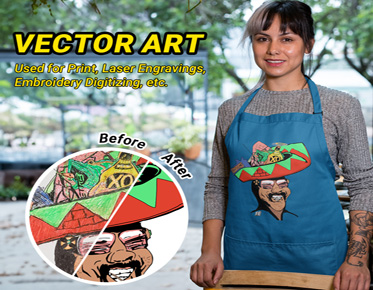Is Using Vector Art for Designing Fashion Accessories Worth It?
In the fast-paced world of fashion, innovation reigns supreme. Vector art has emerged as a significant trend, captivating designers and consumers alike. With its clean lines and scalability, vector graphics breathe life into fashion design, making it easier to create striking visuals that resonate with modern aesthetics. As sustainability and technology intertwine with style, vector art offers an efficient solution for designers looking to keep their work fresh and relevant.
Why Vector Art is a Game-Changer for Fashion Accessories
Vector art is not merely a tool; it’s a game-changer in the realm of fashion accessories. It provides designers with the freedom to create intricate designs that maintain their quality, regardless of size. This adaptability opens the door to a myriad of possibilities—whether you’re designing a bold handbag or delicate jewelry. The precision and flexibility of vector graphics ensure that fashion accessories are not just products but works of art that tell a story.
Types of Fashion Accessories You Can Design with Vector Art
Designing Bags with Custom Vector Graphics
Bags are a staple in fashion, and custom vector graphics elevate them to new heights. Designers can create intricate patterns or bold motifs that enhance the bag's overall aesthetic. The scalability of vector art allows for designs that can be adjusted to fit various bag sizes without losing quality, making each piece a distinctive representation of style and personality.
Creating Jewelry Pieces Using Vector Designs
Vector art also finds its way into the world of jewelry design. With the precision of vector graphics, intricate details can be translated into stunning jewelry pieces. From delicate earrings to statement necklaces, designers can craft unique shapes and patterns that resonate with the wearer’s individuality. The adaptability of vector designs allows for custom pieces that are both stylish and meaningful.
Incorporating Vector Art into Scarves, Hats, and Other Apparel
Scarves, hats, and other apparel benefit greatly from vector art as well. The versatility of vector graphics means designers can create cohesive collections that harmonize with various clothing items. By employing vibrant patterns or intricate illustrations, these accessories become essential elements of a fashionable wardrobe, allowing wearers to express their style with flair.
The Benefits of Using Vector Art in Fashion Design
Easy to Edit and Customize for Multiple Accessories
One of the most significant advantages of vector art is its editability. Designers can easily modify colors, shapes, and patterns to suit different accessories, making the design process efficient and versatile. This adaptability allows for quick adjustments, enabling designers to respond to trends or customer feedback without starting from scratch.
Efficient for Designing Patterns and Repeating Elements
Vector graphics shine when it comes to creating patterns and repeating elements. With the ability to seamlessly repeat designs, fashion accessories can feature consistent and captivating motifs that enhance their appeal. This efficiency not only saves time but also ensures a cohesive aesthetic across a range of products.
Perfect for Laser Cutting and Engraving
Vector art is ideally suited for laser cutting and engraving, making it a favorite among accessory designers. The precision of vector files allows for clean cuts and intricate engravings, resulting in high-quality finishes that elevate the final product. This capability opens up a world of design possibilities, from personalized engravings on jewelry to intricate cutouts in bags.
How Vector Art Enhances Brand Identity in Fashion
Creating Consistent Logos and Branding for Accessories
Brand identity is crucial in fashion, and vector art plays a pivotal role in establishing consistency. Designers can create logos and branding elements that maintain clarity and quality across various platforms and products. This consistency fosters brand recognition, ensuring that consumers can easily identify and connect with the brand.
Customizing Products with Unique Vector-Based Logos
Vector art allows for the customization of products with unique logos tailored to specific collections or themes. This personalization not only enhances brand identity but also resonates with consumers who appreciate exclusivity. Offering limited edition accessories featuring distinct vector designs can create a buzz and foster brand loyalty.
Cost Efficiency of Using Vector Art for Accessory Design
Saving Time and Resources with Reusable Designs
Vector art is a resourceful solution for fashion designers looking to streamline their processes. By creating reusable designs, time spent on repetitive tasks is minimized. Designers can focus their energy on innovating rather than reimagining, resulting in faster turnaround times and increased productivity.
Why Vector Art Reduces Production Costs in the Long Run
Investing in vector art can lead to significant cost savings over time. The ability to scale designs without quality loss means that designers can efficiently produce accessories in various sizes. This scalability reduces waste and optimizes material usage, ultimately lowering production costs and increasing profitability.
Vector Art and the Digital Fashion Revolution
Using Vector Art in Fashion Tech and Virtual Fitting Rooms
The digital fashion revolution is transforming the industry, and vector art is at the forefront. Designers are leveraging vector graphics to create virtual fitting rooms, allowing consumers to visualize how accessories will look in real-time. This integration enhances the shopping experience, bridging the gap between physical and digital fashion.
How Vector Files are Transforming Fashion E-Commerce
Vector files are revolutionizing fashion e-commerce by providing high-quality images that can be easily resized without losing resolution. This adaptability ensures that online retailers can present their products in the best light, enhancing the visual appeal and driving sales. Additionally, vector art can simplify the process of updating product images, making e-commerce management more efficient.
The Role of Vector Art in Sustainable Fashion Design
How Vector-Based Designs Can Support Eco-Friendly Production
Sustainability is a significant focus in fashion, and vector art supports eco-friendly production methods. By creating designs that minimize material waste, designers can contribute to a more sustainable industry. Vector graphics allow for precise measurements and efficient cutting, reducing excess fabric and promoting responsible sourcing.
Reducing Waste with Precise, Scalable Graphics
The scalability of vector art means that designers can easily adapt their creations to different sizes, reducing waste in the production process. This capability encourages a shift towards sustainable practices, where every inch of material is utilized, and overproduction is minimized. Designers embracing vector graphics can lead the charge towards a greener fashion future.
Challenges of Using Vector Art for Fashion Accessories
Can Vector Art Limit Creative Expression?
While vector art offers numerous advantages, some designers may feel it limits their creative expression. The clean lines and geometric forms of vector graphics can sometimes overshadow more organic designs. Striking a balance between vector and freeform styles is essential to ensure creativity remains at the forefront.
Potential Pitfalls When Converting Hand-Drawn Designs to Vector
Converting hand-drawn designs into vector format can present challenges. Details may be lost in translation, and the unique qualities of hand-drawn art can become diluted. To preserve the essence of your original design, careful attention must be paid during the vectorization process, ensuring that the final product maintains its intended charm.
The Limitations of Vector Art in Fashion Design
Difficulty in Capturing Complex Textures and Shading
Vector art excels in simplicity, but capturing complex textures and shading can be a challenge. Intricate details often require raster graphics, which allow for a broader range of visual expression. Designers should be mindful of these limitations when selecting the best graphic style for their projects.
When Raster Images Might Be a Better Option
While vector graphics shine in many areas, there are instances where raster images are more suitable. For designs requiring rich textures or complex imagery, raster graphics can provide the depth and detail needed to convey a particular aesthetic. Understanding the strengths and weaknesses of both formats is crucial for effective fashion design.
Common Mistakes to Avoid When Using Vector Art
Over-Simplifying Designs: When Less Isn’t More
A common pitfall in using vector art is the tendency to over-simplify designs. While minimalism has its place, it’s important to retain character and detail. Striking the right balance between simplicity and complexity can elevate your designs, ensuring they stand out in a crowded market.
Misunderstanding File Formats: AI, SVG, and EPS Explained
Navigating file formats can be confusing, but understanding the distinctions is essential. AI (Adobe Illustrator) files are editable and maintain the highest quality, while SVG (Scalable Vector Graphics) files are ideal for web use due to their small size. EPS (Encapsulated PostScript) files are compatible with a variety of platforms. Knowing when to use each format can streamline your workflow and prevent technical hiccups.
How Vector Art Can Help You Scale Your Fashion Business
Reproducing Designs at Any Size for Mass Production
The scalability of vector art is a boon for fashion businesses looking to grow. Designs can be reproduced at any size without losing quality, making them ideal for mass production. This capability not only streamlines the manufacturing process but also ensures that your accessories maintain their integrity, whether they’re produced in small batches or large quantities.
Streamlining Production Processes with Vector Graphics
Utilizing vector graphics can significantly streamline production processes. By simplifying designs and ensuring they are optimized for production, designers can reduce lead times and enhance efficiency. This optimization can translate to increased output and profitability, allowing businesses to thrive in a competitive market.
Incorporating Custom Vector Art into Your Accessory Line
Designing One-of-a-Kind Accessories with Personalized Vector Art
Custom vector art allows for the creation of one-of-a-kind accessories that reflect individual styles. Designers can develop unique patterns or illustrations tailored to specific collections or customer preferences. This personal touch not only enhances the appeal of accessories but also fosters a deeper connection between consumers and the brand.
Offering Customization Options to Your Customers
In today’s market, consumers crave personalization. By incorporating custom vector art into your accessory line, you can offer clients the option to personalize their purchases. Whether it’s a unique pattern or a custom logo, these options elevate the shopping experience and encourage brand loyalty.
When to Avoid Using Vector Art in Fashion Design
Knowing When Hand-Drawn or Raster Designs Might Be More Suitable
While vector art is versatile, there are times when hand-drawn or raster designs may be more suitable. Complex images requiring rich textures may benefit from raster graphics, while freeform sketches can capture the essence of artistic expression better than vectors. Understanding when to pivot away from vector art is essential for creating impactful designs.
Balancing Vector and Non-Vector Elements in Fashion Accessories
Striking a balance between vector and non-vector elements can lead to the most compelling designs. By thoughtfully integrating different styles, designers can create unique accessories that capture attention and resonate with their audience. Embracing a mix of techniques ensures a rich and diverse design palette. For the premier online vector conversion, feel free to connect with us.
Vector art presents an exciting opportunity for fashion designers, offering a blend of efficiency, versatility, and quality. However, it’s essential to navigate its limitations and challenges with care. By weighing the pros and cons, designers can harness the full potential of vector graphics while maintaining their creative spirit. Incorporating vector art into your accessory line is a journey of exploration and creativity. With thoughtful consideration and a willingness to innovate, you can elevate your designs and make a lasting impact in the fashion industry. Embrace the world of vector art, and watch as your accessories transform into stunning statements of style.



